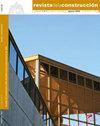CR改性温沥青粘结剂与SBS改性沥青粘结剂车辙、疲劳和抗裂性能的比较研究
IF 1.4
4区 工程技术
引用次数: 2
摘要
采用粘弹性连续损伤(VECD)理论,对橡胶屑改性温沥青粘结剂的车辙抗裂性能和疲劳参数进行了比较。研究了CR改性剂与温混合添加剂Sasobit复合的效果。比较了CR + Sasobit与苯乙烯-丁二烯-苯乙烯(SBS)改性的性能。新开发的流变学试验,如多应力蠕变恢复(MSCR)、线性振幅扫描(LAS)和常规试验,应用于改性粘合剂。结果表明,CR + Sasobit改性的粘结剂比添加sbs的粘结剂更能改善车辙参数。虽然CR添加剂改善了粘合剂在低温和中温下的流变性能,但当与Sasobit添加剂一起使用时,这种效果会降低。Sasobit添加剂提高了低温下的刚度,降低了低温下的疲劳参数。此外,LAS试验结果显示,在高应变值(即:CR和Sasobit改性粘结剂的疲劳寿命低于纯粘结剂的疲劳寿命。换句话说,CR和Sasobit改性粘合剂不能保持材料的完整性。本文章由计算机程序翻译,如有差异,请以英文原文为准。
Investigation of rutting, fatigue and cracking resistance parame-ters of CR modified warm asphalt binders compare with SBS modified binders
This study compares the rutting and cracking resistance and fatigue parameters of crumb rubber (CR) modified warm asphalt binders, which were determined by viscoelastic continuum damage (VECD) theory. The effect of the combination of CR modification and Sasobit, a warm mix additive, was investigated. Performance of CR + Sasobit compound was compared with styrene-butadiene-styrene (SBS) modification. Newly developed rheological tests such as multi stress creep recovery (MSCR), lineer amplitude sweep (LAS) and conventional tests were applied to modified binders. It was determined that the CR + Sasobit modified binders improved the rutting parameter better in comparison to SBS-added binders. Although the CR additive improved the rheological properties of the binder at low and medium temperatures, this effect was reduced when used with Sasobit additive. Sasobit additive increased the stiffness and decreased the fatigue parameter at low temperatures. Besides, the results of the LAS test revealed that at high strain values (i.e.> 6%), the fatigue life of CR and Sasobit modified binders was lower than the fatigue life of the pure binder. In other words, CR and Sasobit modified binders could not preserve material integrity.
求助全文
通过发布文献求助,成功后即可免费获取论文全文。
去求助
来源期刊

Revista de la Construccion
工程技术-工程:土木
CiteScore
2.30
自引率
21.40%
发文量
0
期刊介绍:
The Journal of Construction is aimed at professionals, constructors, academics, researchers, companies, architects, engineers, and anyone who wishes to expand and update their knowledge about construction. We therefore invite all researchers, academics, and professionals to send their contributions for assessment and possible publication in this journal. The publications are free of publication charges.
OBJECTIVES
The objectives of the Journal of Construction are:
1. To disseminate new knowledge in all areas related to construction (Building, Civil Works, Materials, Business, Education, etc.).
2. To provide professionals in the area with material for discussion to refresh and update their knowledge.
3. To disseminate new applied technologies in construction nationally and internationally.
4. To provide national and foreign academics with an internationally endorsed medium in which to share their knowledge and debate the topics raised.
 求助内容:
求助内容: 应助结果提醒方式:
应助结果提醒方式:


